We spent a lot of the morning getting sorted as it was still raining lightly outside. I decided we should go to Leeds Castle and hoped that the weather would be better on our return.
We left about 11am and had a slow drive to the motorway and at one stage a Royal navy bomb disposal vehicle shot past
. We then sped up on the motorway and got to Leeds castle by 1pm. The cricket was on so John had that to listen to while I caught up on the blogs. We hit the M25 and I started to think I had made the wrong suggestion.
It did take about 15 minutes longer than the GPS had first suggested but we finally arrived at Leeds castle. We walked up through the lovely grounds, admiring the bird life on the way. We stopped to photograph a pair of peacocks at the side of the walkway.
The castle was built on 2 islands in the middle of a man made lake. It was created by Edward 1st in the 13th century when he diverted the river Len. The keep is from the 13th century, the clock tower from the 15th century and the bridge and new part from the 19th century.
The tour took us first into the 12th century cellars, which are still used to store wine today
. We were told there was a castle built on the site in 1119 but it was destroyed.
Henry 8th transformed the castle for his fist wife, Catherine of Aragon. The estate provide sufficient food for the inhabitants usually but not enough for a royal visit. When the King and Queen visited, they brought with them 2000 sheep, 800 calves, 1600 fish, 1300 chickens, 3 porpoises and 1 dolphin. John would not let me write down the rest of the list. They were going to a tournament known as the Field of Cloth of Gold.
Most of the castle was renovated by the final owner, Lady Baillie, an American heiress. She left the house and grounds to the nation, with the proviso it be used for events. She was very wealthy so most of the castle was redone in her time.
The first rooms were mainly restored to match historic use. The Queen’s room had a very large bed and a small day bed with a high canopy, a symbol of power. The nearby bathroom had a circular wooden bath also with a high canopy. The sitting room had busts of Henry 8th and his 3 children that were made sometime before 1569.
The chapel had been converted into lay use but was reconsecrated in 1978 by the Archbishop of Canterbury
. It had some interesting German nativity scene panels. Edward 1st had established the chapel after the death of Queen Eleanor.
We went up the spiral staircase that had been wire-brushed when new to make it look old. There was also a secret spiral staircase in the house, from the dining room to Lady Baillie’s room.
We then saw the rooms still in use. There is a Board room, a seminar room and a number of bedrooms used by conference delegates and wedding guests. The yellow bedroom had been used in the past by David Niven and Charlie Chaplin. The seminar room was used for preliminary meetings that ended in the Camp David summit and also for meeting with Sinn Fein before the 2004 Northern Ireland peace agreement.
Lady Baillie’s dressing room and bedroom are kept as she used them. The dressing room was redone in the 1920 but included built in lighting, onyx walls in the bathroom and under floor heating
. The bedroom had built in bed lights. Her dressing case was there, made with silk, crocodile skin gold and ‘new’ plastic!! All items had her initials on them in gems. Her linen all had black swans embroidered on them, after she brought some from Australia after a visit there. They are now the symbol of the castle.
We then went though some less restored rooms. There were 17th century tapestries on some of the walls, silk damask on others and an old cornice round the ceiling. There was a 12th century stone lion in one hall and a 16th century equestrian statue, the oldest in England in another hall.
One of the final rooms was the library with its 3000 books. This was the school room for Lady Baillie’s two daughters who had a governess. During WW2 it was used as a ward and her daughters both helped as volunteer nurses.
We had a meal, and then briefly visited the aviary. There were a lot of cockatoos, many endangered. There was also a kea display – the keas had to be in separate cages at present as they had had a fight and one was injured. It started to rain again so we returned to the gates in a road train that ran through the grounds.
We tried to go back a different way but were caught in a detour and in the end decided to go with the Tom Tom and the motorway. We went off the main road about 50km from the apartment and found a few caches there. We found one at a church which was unusual in that it had a chimney. Outside there was a memorial to 2 local martyrs, killed (burnt at the stake) for their faith, in the 16th century. We went inside to find the church was open as there was about to be a choir practice. We had a chat with the organist, who had been twice to New Zealand. We also went past a very small country cricket ground.
While it was lovely that the sun was out, the setting sun in the west made driving a bit of a challenge. We were home just before it was dark and we had tea in the apartment before sorting out blogs etc.
Visiting Leeds Castle
Friday, August 27, 2010
 Chichester, England, United Kingdom
Chichester, England, United Kingdom
Other Entries
-
84On the prowl at Whitby
Aug 1017 days prior Whitby, United Kingdomphoto_camera13videocam 0comment 0
Whitby, United Kingdomphoto_camera13videocam 0comment 0 -
85Rob Roy territory
Aug 1116 days prior Lochearnhead, United Kingdomphoto_camera11videocam 0comment 0
Lochearnhead, United Kingdomphoto_camera11videocam 0comment 0 -
86'By yon bonnie banks'
Aug 1215 days prior Inverness, United Kingdomphoto_camera17videocam 0comment 0
Inverness, United Kingdomphoto_camera17videocam 0comment 0 -
87To the top at John O'Groat's
Aug 1314 days prior Inverness, United Kingdomphoto_camera13videocam 0comment 0
Inverness, United Kingdomphoto_camera13videocam 0comment 0 -
88Dawdling down to Dumfries
Aug 1413 days prior Dumfries, United Kingdomphoto_camera14videocam 0comment 0
Dumfries, United Kingdomphoto_camera14videocam 0comment 0 -
89A visit to wee Robbie
Aug 1512 days prior Dumfries, United Kingdomphoto_camera22videocam 0comment 0
Dumfries, United Kingdomphoto_camera22videocam 0comment 0 -
90Off to see cookie bear
Aug 1611 days prior Shrewsbury, United Kingdomphoto_camera8videocam 0comment 0
Shrewsbury, United Kingdomphoto_camera8videocam 0comment 0 -
91Hanging out with Sabrina
Aug 1710 days prior Shrewsbury, United Kingdomphoto_camera20videocam 0comment 0
Shrewsbury, United Kingdomphoto_camera20videocam 0comment 0 -
92Welcome to Wales boyo
Aug 189 days prior Cardiff, United Kingdomphoto_camera9videocam 0comment 0
Cardiff, United Kingdomphoto_camera9videocam 0comment 0 -
93Wales in the wet
Aug 198 days prior Cardiff, United Kingdomphoto_camera5videocam 0comment 1
Cardiff, United Kingdomphoto_camera5videocam 0comment 1 -
94Cardiff Castle to Barnhill Cottage
Aug 207 days prior Brampford Speke, United Kingdomphoto_camera16videocam 0comment 1
Brampford Speke, United Kingdomphoto_camera16videocam 0comment 1 -
95The Black Adderrrr....
Aug 216 days prior Brampford Speke, United Kingdomphoto_camera7videocam 0comment 0
Brampford Speke, United Kingdomphoto_camera7videocam 0comment 0 -
96Visiting the rellies in Kents Caves
Aug 225 days prior Brampford Speke, United Kingdomphoto_camera12videocam 0comment 0
Brampford Speke, United Kingdomphoto_camera12videocam 0comment 0 -
97Moor travels
Aug 234 days prior Brampford Speke, United Kingdomphoto_camera14videocam 0comment 0
Brampford Speke, United Kingdomphoto_camera14videocam 0comment 0 -
98Motoring to Bealieu
Aug 243 days prior Chichester, United Kingdomphoto_camera10videocam 0comment 1
Chichester, United Kingdomphoto_camera10videocam 0comment 1 -
991066 and all that
Aug 252 days prior Chichester, United Kingdomphoto_camera3videocam 0comment 0
Chichester, United Kingdomphoto_camera3videocam 0comment 0 -
100Catching up with Chalky and Pam
Aug 261 day prior Chichester, United Kingdomphoto_camera16videocam 0comment 0
Chichester, United Kingdomphoto_camera16videocam 0comment 0 -
101Visiting Leeds Castle
Aug 27 Chichester, United Kingdomphoto_camera10videocam 0comment 0
Chichester, United Kingdomphoto_camera10videocam 0comment 0 -
102Chichester to Winchester to London
Aug 281 day later London, United Kingdomphoto_camera26videocam 0comment 0
London, United Kingdomphoto_camera26videocam 0comment 0 -
103Fast cars, a Palace and treacle
Aug 292 days later London, United Kingdomphoto_camera6videocam 0comment 0
London, United Kingdomphoto_camera6videocam 0comment 0 -
104Cruising down the River
Aug 303 days later London, United Kingdomphoto_camera11videocam 0comment 0
London, United Kingdomphoto_camera11videocam 0comment 0 -
105There'll be blue birds over......
Aug 314 days later London, United Kingdomphoto_camera22videocam 0comment 0
London, United Kingdomphoto_camera22videocam 0comment 0 -
106To Ireland begorrah...
Sep 015 days later Ballymacaw, Irelandphoto_camera2videocam 0comment 0
Ballymacaw, Irelandphoto_camera2videocam 0comment 0 -
107A fox on the run
Sep 026 days later Ballymacaw, Irelandphoto_camera3videocam 0comment 0
Ballymacaw, Irelandphoto_camera3videocam 0comment 0 -
108Cuisin' the Copper Coast
Sep 037 days later Ballymacaw, Irelandphoto_camera6videocam 0comment 0
Ballymacaw, Irelandphoto_camera6videocam 0comment 0 -
109Quick note to everyone re earthquake
Sep 048 days later Ballymacaw, Irelandphoto_camera0videocam 0comment 1
Ballymacaw, Irelandphoto_camera0videocam 0comment 1 -
110A shaky start
Sep 048 days later Ballymacaw, Irelandphoto_camera6videocam 0comment 0
Ballymacaw, Irelandphoto_camera6videocam 0comment 0 -
111From Famine ships to hurling
Sep 059 days later Ballymacaw, Irelandphoto_camera4videocam 0comment 0
Ballymacaw, Irelandphoto_camera4videocam 0comment 0 -
112By Hook or by Crooke
Sep 0610 days later Ballymacaw, Irelandphoto_camera14videocam 0comment 0
Ballymacaw, Irelandphoto_camera14videocam 0comment 0 -
113It's a long way...
Sep 0711 days later Ballymacaw, Irelandphoto_camera17videocam 0comment 0
Ballymacaw, Irelandphoto_camera17videocam 0comment 0 -
114Wandering about Wexford
Sep 0812 days later Ballymacaw, Irelandphoto_camera15videocam 0comment 0
Ballymacaw, Irelandphoto_camera15videocam 0comment 0 -
115The Rain of Kerry
Sep 0913 days later Ballymacaw, Irelandphoto_camera5videocam 0comment 0
Ballymacaw, Irelandphoto_camera5videocam 0comment 0 -
116Nothin' much doin'
Sep 1014 days later Ballymacaw, Irelandphoto_camera3videocam 0comment 0
Ballymacaw, Irelandphoto_camera3videocam 0comment 0 -
117A load of Blarney
Sep 1115 days later Ballymacaw, Irelandphoto_camera15videocam 0comment 0
Ballymacaw, Irelandphoto_camera15videocam 0comment 0 -
118The products of Waterford
Sep 1216 days later Ballymacaw, Irelandphoto_camera13videocam 0comment 0
Ballymacaw, Irelandphoto_camera13videocam 0comment 0 -
119Doin' Dublin
Sep 1317 days later Ballymacaw, Irelandphoto_camera14videocam 0comment 1
Ballymacaw, Irelandphoto_camera14videocam 0comment 1

 Chichester, England, United Kingdom
Chichester, England, United Kingdom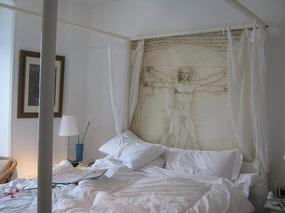
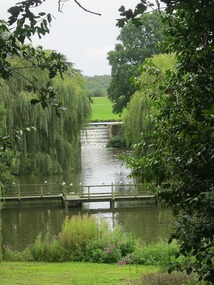
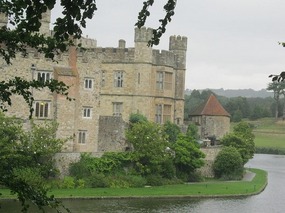
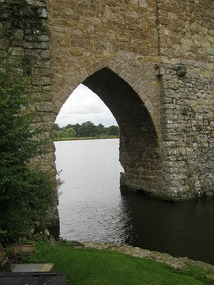


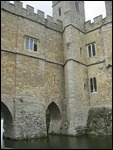
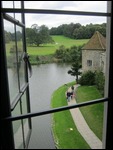

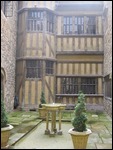
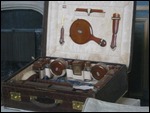
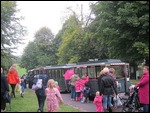
2025-05-22